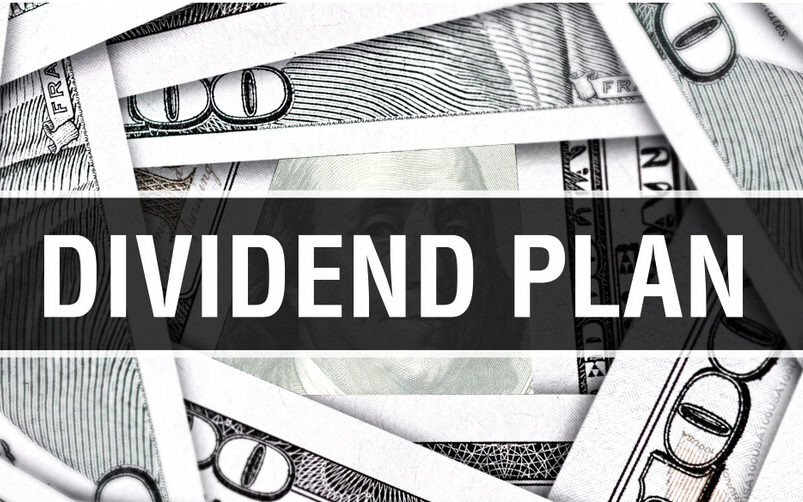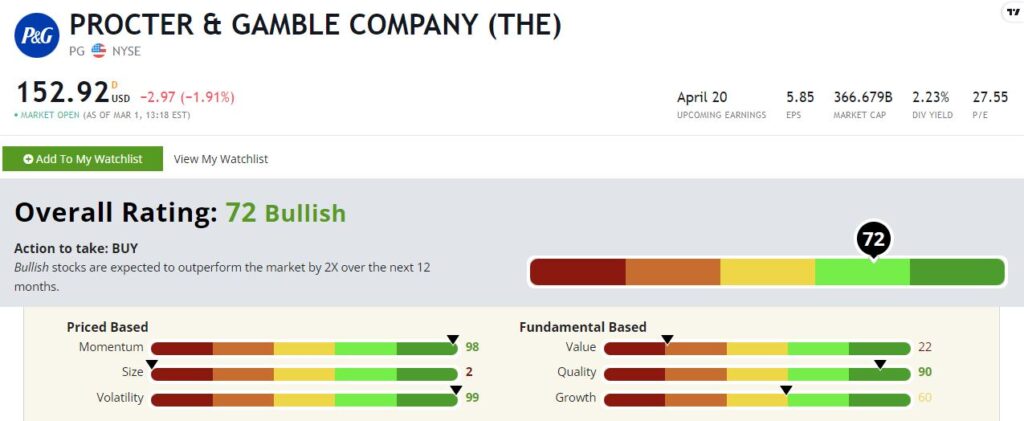Looking for safety? You can’t argue with longevity.
We may be in the most uncertain market environment of our lifetimes.
We have:
- Inflation at 40-year highs…
- A central bank that seems clueless on a solution that won’t also kill the economy…
- A conflict in Europe that could escalate into World War III.
In a moment like this, I take comfort in dividend stocks like Procter & Gamble Co. (NYSE: PG).
Procter & Gamble Is a Sturdy Dividend Stock
PG has been in business since 1837 … meaning it survived both world wars and even the U.S. Civil War. It’s paid a dividend for 131 consecutive years and raised it for the past 65 years and counting.
I don’t know what happens next in the Ukraine conflict. For all I know, we may all be eating radioactive dust next week. But assuming the world doesn’t end (and maybe even if it does), PG will still be around producing razors, shampoo, diapers and a host of other basic necessities.
And its dividend yield of 2.2% — while not the highest you’ll find — is about as safe as you can get. It’s also competitive with bonds and other income investments.
PG’s Green Zone Rating
Procter & Gamble rates a “Bullish” 72 on our Green Zone Ratings system. As we dig into the numbers, you’ll see why I like the stock in today’s climate.
Volatility — With a volatility factor rating of 99, PG is one of the lowest-volatility stocks in our universe. Remember, the higher the score here, the lower the volatility. And we want low volatility when it comes to retirement income and dividend stocks.
The underlying business can be attributed to this lack of huge price swings. Procter & Gamble makes basic staples that get used and replaced. It’s immune to most swings of the economic cycle, and nothing short of nuclear war or a planet-ending comet collision is likely to change that.
Momentum — Investors are scared right now, and not just because of what’s going on in Ukraine. Inflation and higher interest rates threaten the growth model of the past decade. Not surprisingly, this has boosted Procter & Gamble’s momentum, which now rates a 98. When you buy PG stock, you’re not making a bet about potential profits years or decades in the future. You’re looking at recurring cashflow today.
Quality — PG also rates a solid 90 on our quality factor, and branding plays a big role there. Our quality score is based on profitability. Procter & Gamble’s strong branding (Pampers, Tide and Charmin — just to name a few) allows it to charge premium prices, which in turn flows through to higher profit margins.
Growth — Procter & Gamble isn’t a growth powerhouse. But with a growth factor rating of 60, it’s better than average. PG’s score here is a testament to the company’s competitive drive. Despite its age and maturity, Procter & Gamble is far from complacent.
Value — PG isn’t cheap. Investors will pay a premium for quality companies that are also durable. That’s reflected in its low value factor rating of 22. Ideally, I’d prefer to buy the stock at a cheaper price. But if you’re waiting for PG to hit cheap valuations, you might be waiting a really long time…
Size — Procter & Gamble isn’t small. It sports a $360 billion market cap and rates a 2 on our size factor. That’s OK. When you’re looking for stability, a large company isn’t such a bad thing.
Bottom line: Procter & Gamble isn’t an undiscovered dividend stock. But it’s a solid, long-term payer that shouldn’t ever give you grief.
In this market, that’s reassuring.
To safe profits,
Charles Sizemore
Co-Editor, Green Zone Fortunes
Charles Sizemore is the co-editor of Green Zone Fortunes and specializes in income and retirement topics. He is also a frequent guest on CNBC, Bloomberg and Fox Business.







